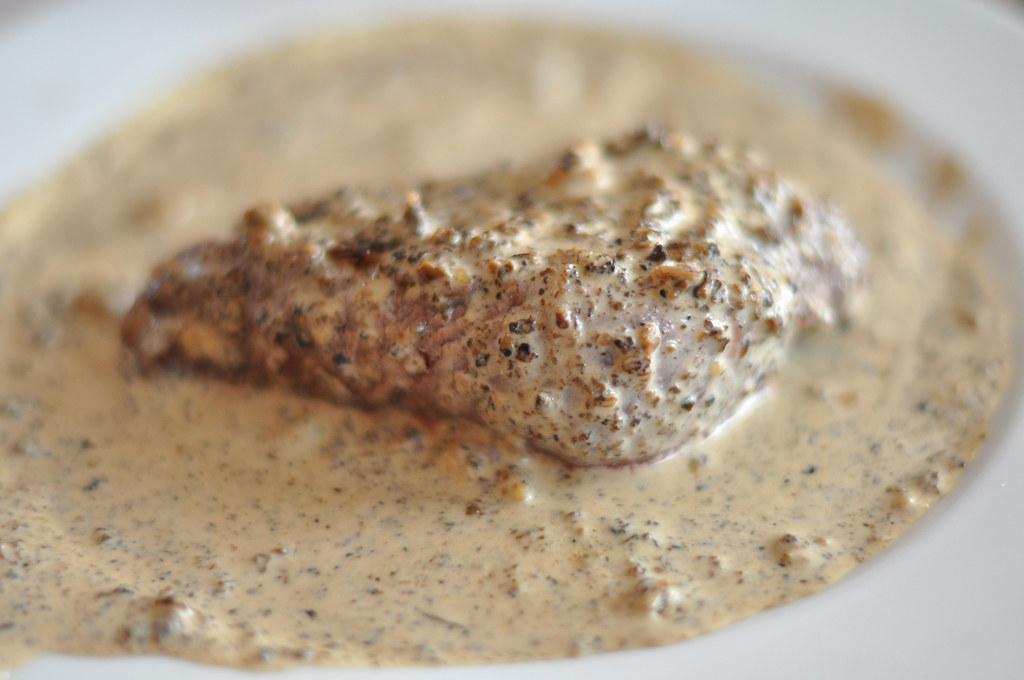
Satsivi is made with fatty poultry, preferably turkey. Walnuts, spices, and more walnuts combine to make a nutty sauce that, once tasted, sticks in your mouth forever.
There are differences in Satsivi from region to region of Georgia (sometimes significantly), but not in essence. The essence of this dish is poultry meat: pheasant, turkey, chicken, in a nut sauce. Normally, satsivi is served at a festive table. If the event is in the evening, the dish should be prepared in the morning so that it can properly infuse.
We're cooking Mingrel-style turkey satsivi today - a bright and healthy meal thanks to the addition of adzhika along with spices. Use a whole turkey carcass or 1-1,5 kg of turkey (calculation for 3-4 servings), any fleshy part will do, like shanks and filets. If the meat is on a bone, then the broth will be rich and delicious.
You'll need a lot of walnuts for satsivi sauce. Make sure your kernels aren't brown and dried out, but light and juicy. The more brightly colored and "fleshier" the nuts are, the better the sauce is, homogeneous, silky, pleasing, and very tender in taste, without bitterness. The quality of the nuts directly impacts how much oil you can squeeze, so choose them carefully.
Satsivi can't make it without utsho-suneli (blue fenugreek). You'll find it in Georgian spice shops. If you can't find this aromatic herb, use hopli- suneli, which contains fenugreek. Do not go overboard with the seasoning, so it doesn't affect the taste. Satsivi is colored with saffron (marguerites) from Imereti (you can buy it in a store).
Turkey (shanks and filets) - 1.5 kilograms
2 onions
Walnuts 200 grams
2 cloves of garlic
1/2 teaspoon dried coriander
Grass coriander seeds - 2 pinches
Sunneli - 1/2 teaspoon
Saffron Imereti - 1 teaspoon
Cinnamon ground - 1 pinch
Vinegar - 2 tablespoons
Two tablespoons of flour
Some salt if you like
Mingrelian adjika (hot pepper paste without tomatoes, etc.) - 1 tsp
Black pepper, bay leaf, onion - for broth

1) You've got to boil the turkey. It doesn't matter what part of the bird you use. I used a shank of 1 kg and a fillet of 500 g this time. To make the broth stronger, I added one whole onion, 5-6 peas of black pepper, salt to taste, and about 15 minutes before the end I put in one bay leaf. I boiled the meat for 40 minutes until it was fully done. If you have a very thick turkey shank, you can cut it into pieces if necessary. You need to put the bones in the pot. It will take only a few minutes for the broth to boil. Don't forget to remove the foam from the surface during boiling to make the broth transparent. What's your water need? You'll need enough to make 4-5 glasses of broth. The liquid should cover the meat completely.
2) We're gonna use the broth for the sauce. Then we're gonna bake the meat for 15-20 minutes (190-200 degrees, grease the baking pan with vegetable oil). That way, the turkey will be browned, tastier, and more appetizing than if we just boil it.
3) Remove the top fat from the broth (if you get some broth, it's okay) and cook it in a frying pan. Make the onions soft by frying them in the fat until they become transparent. You can use butter if there isn't much fat.
4) Now we're getting to the nuts. Along with the fried onions, we roll the walnuts in a meat grinder. Add 2-3 peeled garlic cloves and 1 incomplete teaspoon of adjika. Run it through a fine mincer two more times.
5) The nut mass gets denser and shinier as it spins, which means that the nuts have started secreting oil. Take the mass in your palm and squeeze the liquid (oil) into a separate container - you'll get about one pile. We'll use the nut butter later, but first, we should dilute it in broth.
6) The nut mass has the saffron from Imereti (either crushed or by hand) and certainly some sunchokes. You can add another clove ground in a mortar if you want. Grind together flour, dried coriander, and ground coriander until smooth. Stir in the wine vinegar.
7) Strain the broth from the poultry. Slowly pour 2 spoons of liquid into the nut mixture, stirring thoroughly every time to avoid lumps. It'll gradually get lighter.
8) Put more broth in the nut sauce until it's thick like liquid semolina (later, the satsivi will thicken to the consistency of yogurt). Let it simmer. Bring to a boil and simmer for 5 minutes. If the sauce has thickened a lot, you can add more broth. Put turkey pieces in satsivi - just meat, no bones (you don't have to eat the skin).
9) Braise all together on low heat for 15 minutes, stirring often to keep it from burning. If it gets too thick, add broth. We add salt, cinnamon, and a few ground cloves at the end. Let it cool.
10) Let your turkey satsivi cool down and rest in the fridge for at least four hours, and overnight if possible. During soaking, the meat will soak, and the sauce will thicken. You can drizzle walnut oil on top before serving, or sprinkle with fresh coriander. This is usually accompanied by crispy white bread or lavash, or even gomi - a cornmeal porridge. Store it in the fridge for up to two days. Enjoy!